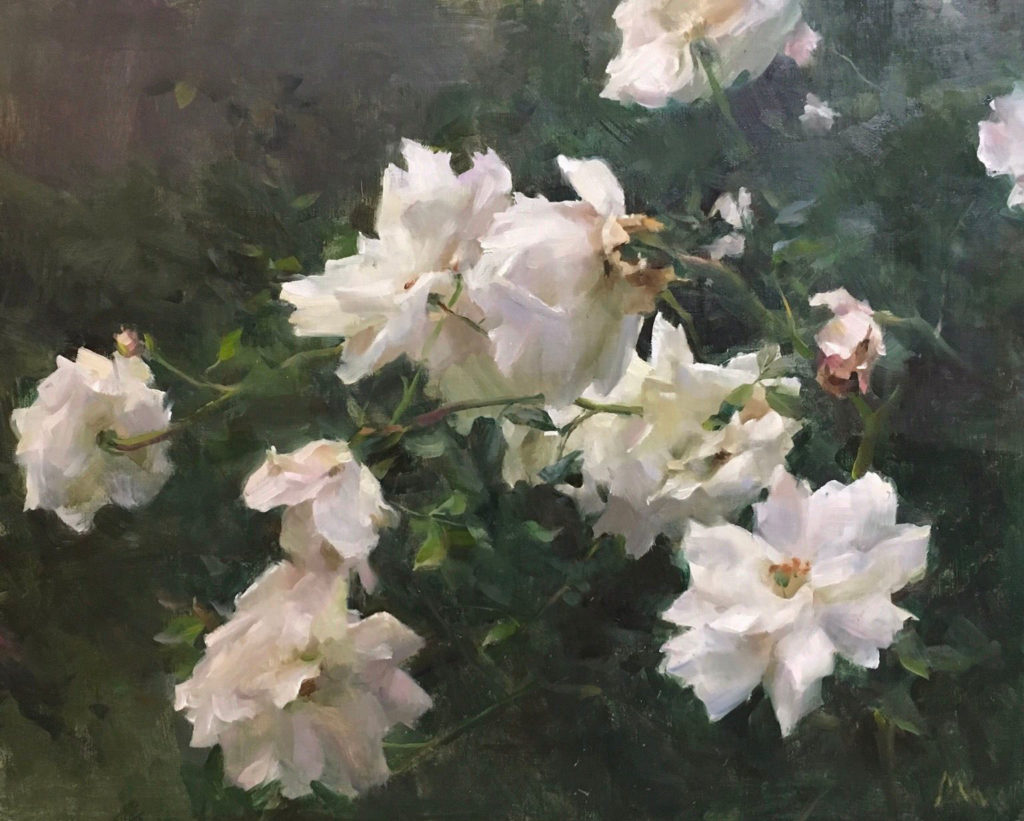
Painting Advice for Artists > In this guest blog post from Kyle Ma, discover what might be keeping you from raising the bar.
By Kyle Ma
If you ask most people how to get proficient at a skill, often you will hear the word “practice.” This answer is true; it is almost impossible to gain proficiency without a strong work ethic. However, this is only part of the answer. To be skilled at painting a still life or any subject, you must not only practice, but practice effectively. So in this article I’d like to explain certain habits that might keep you from improving.
Impatience: If I could go back in time and tell my younger self one thing about painting, it would be to be more patient with my progress. This may seem counter-intuitive, since we all would like to improve quickly. However, in art, rushing through the fundamentals will limit what you can do later on. Take as much time as you need to learn all the basics. Once these skills are well established, you will be empowered to express your ideas more freely and not be held back by the technical aspects of art.
Specializing too early: In the beginning stage of your development of art, learn to draw/paint a wide range of subject matter. All the fundamental principles are the same regardless of your choice of subject. However, working on different subjects allows you to express yourself in different ways. If you enjoy painting a particular subject the most, you can specialize in that later on in your development. There is a big difference between painting a certain subject because that’s what you love to do versus painting that subject because you can’t paint other subjects.
Being overly concerned with the final product: We all would like to create good work, but the process is equally important. The painting process should not be driven by fear of creating a bad painting. View every piece as an opportunity to learn. In the process of learning, it is almost inevitable to create failed paintings. Let these failures teach you what to do differently in the future. And do not let the fear of failure prevent your growth.
Not enough practice: There are many great resources for artists to learn from. Books, instructional videos, and live demos are a great way to learn how to paint. But the most valuable way of learning to paint is to practice painting yourself. Practicing reinforces ideas you learned and allows you to apply those concepts into your own work. Set goals for how often you want to paint, and make achieving that goal a priority.
Trying to force a style: Having a style is important in art. However, when we try to force a certain style consciously, the style is no longer genuine. If you stay open-minded, a style will emerge naturally. Everyone sees the world in a different way. If we just remain true to what we see, the unique perspective will come out in our work.
Not painting for self: When trying to master the technical elements of art, it is important to remember why you started doing it in the first place. Taking advice from others is a great way to learn. However, it may become dangerous if your goal in making art is to please others. Paint for yourself, and realize that not everyone may like what you create. But in the end, your work will seem much more authentic if you make it for yourself.
Oil Paintings by Kyle Ma:




Visit Kyle Ma’s website at kylemafineart.com.
Sign up to receive Fine Art Today, the free weekly e-newsletter from
Fine Art Connoisseur magazine.








[…] articles by or about Kyle Ma > • 6 Things That Keep Artists From Improving Their Work by Kyle Ma • A Prodigious Prodigy (submitted by Wilcox […]